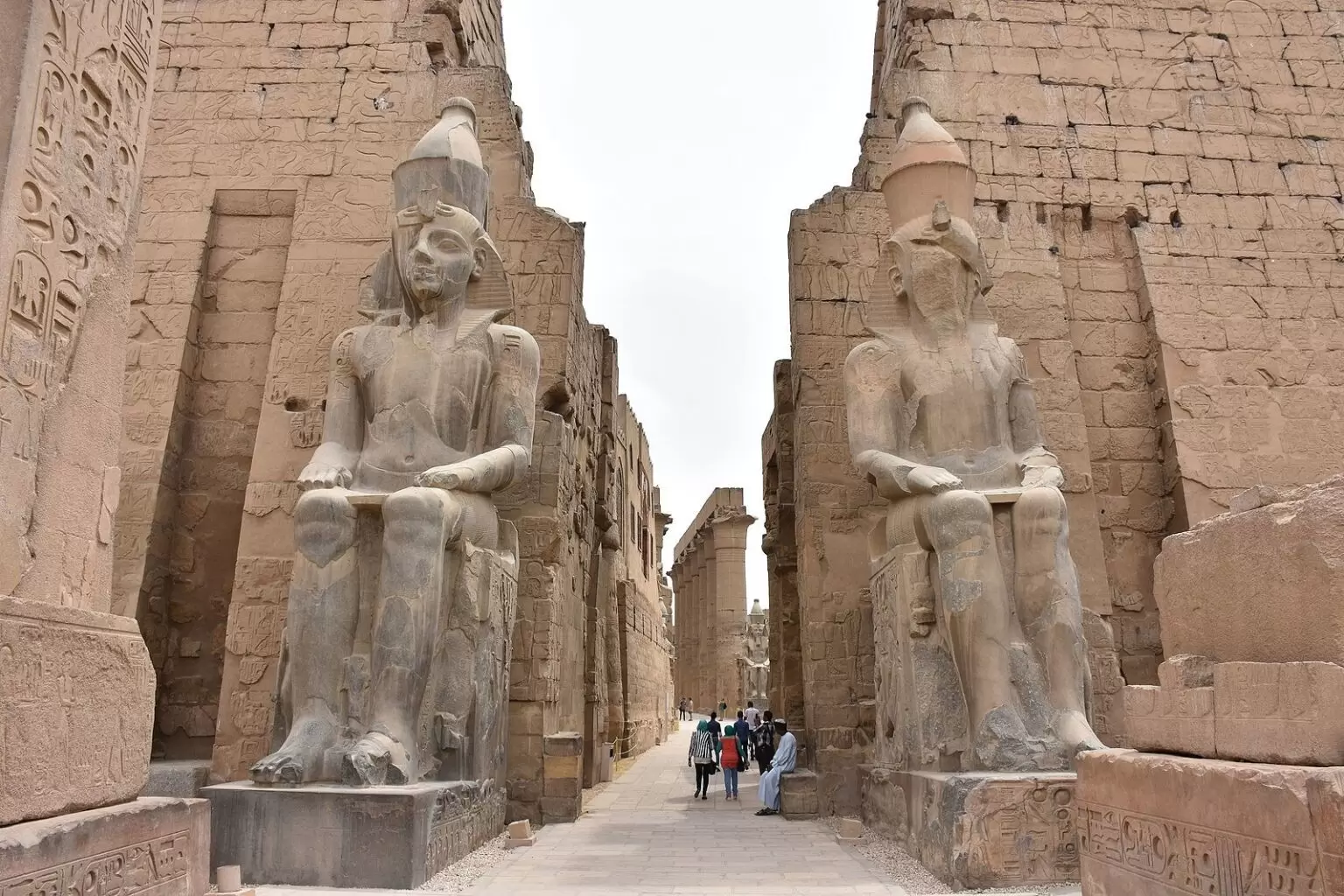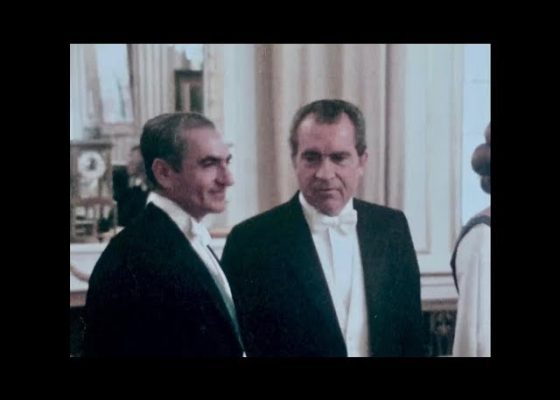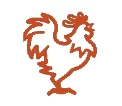
By Tim Gebhart
In the populous desert country of Egypt, the spurning of a renewal of interest in their ancient pharaonic Egyptian culture began with the construction and inauguration of the Grand Egyptian Museum, slated to be completed by mid-2021. The museum rests on the Giza plateau, a few kilometers from the Giza pyramids. Upon its completion, it will be the largest archaeological museum complex in the world.
The museum project marks a solid investment in tourism by the Egyptian government after decades of political instability and unrest. The Egyptian government is looking to turn the page and embark on a new chapter, removing itself from recent turbulent events such the Arab Spring Movement and the conflicts that engulfed the middle-east for over 50 years, stymying growth and advancement in the region.

In a keystone event to capture international attention, 22 royal mummies were moved from a century-old museum in Cairo’s central Tahrir Square to the newly established National Museum of Egyptian Civilization in Fustat, five miles south of Cairo.
The parade was a rare public celebration of Egypt’s Pharaonic past by the majority Muslim country whose administrations in the last several decades invested little to no effort in promoting their ancient national treasures. Egypt, tempted by recent peace negotiations and relative stability in the middle-east, saw an opportunity to develop their tourism industry on a grand scale to the world.
The multi-million dollar spectacle had also been broadcast throughout Egypt as a nationalistic event meant to kindle Egyptian pride. Egyptian President Abdel Fattah El Sisi gave his blessings to the parade, noting that “This majestic scene is a further proof of the greatness of Egyptian people — the guardians of this unique civilization that extends into the depths of history.”
The three-mile “Pharaohs’ Golden Parade” featured performers in period costumes, chariots, grand musical scores, and a 21-gun salute upon the arrival of the mummies at their new resting place at the National Museum of Egyptian Civilization. The remains of 18 kings and four queens were each transported on golden and blue cars designed to mimic pharaonic boats. The mummies themselves were placed in oxygen-free nitrogen capsules, protected at all costs along the journey with heavily-armed escorts, as they would have been in their living years.
The opening of the Grand Egyptian Museum and the parade also comes on the heels of the discovery and unearthing by archaeologists of Aten, “the lost golden city,” the largest city ever uncovered in Egypt near Luxor earlier in 2021. Zahi Hawas, an Egyptologist working at the site stated “We believe that this golden lost city is the most important discovery after the discovery of the tomb of Tutankhamun.”
Civilization of the Stars
Through the opening of the Grand Egyptian Museum and the wide broadcast of the Pharaohs’ Golden Parade, ancient Egyptian heritage is being displayed on a grand international scale, putting Egypt on the map again as a major tourist attraction beyond its borders. With thousands of temples and complexes winding along the Nile River from the Valley of the Kings, Luxor, the massive Abydos temple, and the over one hundred pyramids will be opened to the world again and celebrated.

Much of Egypt’s Pharaonic past still remains an enigma however. With renewed attention given to its architecture and relics, hopefully, more serious attention will be given to dynastic Egyptian culture and literature, most notably their poetry, one of their main mediums they used to share their philosophy, feelings, emotions, and experiences in life. Richard Parkinson, an expert on ancient Egyptian poetry at London’s British Museum, stated “Poetry is perhaps the greatest forgotten treasure of ancient Egypt.”
When we understand ancient Egyptian’s esoteric views of the world which they expressed in their writings, their exoteric world will become increasingly clear. In the book “The Dawning Moon of the Mind: Unlocking the Pyramid Texts” by Susan Brind Morrow who studied ancient Egyptian writings and hieroglyphs extensively, she suggested that the writings, contrary to Anglo-Victorian 18th century views as being incoherent and primitive writings, were actually “a compendium of mystical poetry made up of beautifully composed verses. Some of [the verses] are direct astronomical references, others a description of the emergence of the soul and the soul reentering the stream of nature.” Susanbrindmorrow.com
Morrow argues linguists and archaeologists have wrongly studied Egyptian hieroglyphic writings mostly as prose, thus assuming their content was of fixed meaning and purpose, speaking of events and ideas with linear, one-dimensional meaning. The writings often were interpreted as being of “immature” quality as a result.
Morrow deciphered many such poems in her book, bringing ancient Egyptian views on daily life and spirituality to light. Within the poems, they contain a vast beauty, detailing how the ancient Egyptians lived in and viewed their world, which is so markedly differently than how we view things today. The poems may come across as metaphoric, cryptic, and nonsensical to our modern, practical minds.

As an example of one such poem from dynastic Egypt is a harpist’s hymn, dating from about 1160 B.C., this poem was found on the tomb of Inherkhawy, a strikingly beautiful poem about love and of life:
The Harper’s Song for Inherkhawy (Excerpt)
So seize the day! hold holiday!
Be unwearied, unceasing, alive
you and your own true love;
Let not the heart be troubled during your
sojourn on Earth,
but seize the day as it passes!
In another curious poem, we come across an all too common theme in ancient Egyptian writing of linking their culture and lives with that of the distant stars…
In the pyramid of Unas, in a pyramid complex south of the Giza plateau is written this poem:
“when the God Ra was feeling old and tired, he decided
to go back home to Orion… “
Another reads “may you traverse the winding waterways and go to the place where Orion is.” Winding waterways in the poem refers to the Milky Way. Their Gods, according to myth, used to travel on celestial boats on the Milky Way (The Milky Way used in this instance is a synonym for stars in general).
The constellation Orion in ancient Egyptian language is pronounced “SAQH,” which means “divine stars of the Gods. The hieroglyphs of Orion were written also as “land of the ancestors.”
Ancient dynastic Egyptian civilization and culture was anomalous from 6,000 B.C. up until 320 B.C., the time of Alexander the Great. It was a civilization that had a very deep and advanced understanding of science, mathematics, astronomy, and of the human condition.
Much of the advanced culture and architecture of ancient Egypt is increasingly speculated by researchers to have pre-dynastic origins. The enigmatic Sphinx’s construction may date back 10,000 years based on severe weathering patterns. The Sphinx shows signs of being submerged underwater around the time of the Great Flood (5,600 B.C).

As much of the world had been set back by the Great Flood, Egypt’s predynastic culture may have continued on to some degree. Their advanced culture became the foundation of Western civilization with much of its architecture, wisdom, and knowledge being adopted and emulated by the ancient Greeks.
Astronomically, the Orion constellation had aligned with the airshafts of the Great Pyramid of Giza at about the same time the Sphinx had been purported to have been constructed. In a robotics study conducted by Robert Richardson and his team from the School of Mechanical Engineering, University of Leeds, UK using tiny remote-controlled robots, they observed and measured the shafts of the Great Pyramid. Their findings suggested that “using astronomical data about stellar movement, they argue that the Orion stars coincide exactly with the pyramids’ positions in approximately 10,400 B.C.” This was a period the Egyptians called the First Time, when they believed the God Osiris ruled the Earth.
In the controversial book, “The Law of One,” in which people transcribed the teachings of Ra, thought to be the same Egyptian God of the Sun, one of the most important gods in ancient Egyptian belief, Ra mentions his visitation to Egypt 11,000 years ago.

If we study the construction of the Great Pyramid of Giza, it would not be able to be constructed with our modern technology. There are granite stones in the pyramid that weigh 70 tons each. If any of the foundation stones were off by even a centimeter, the pyramid would corkscrew out of alignment. 2.3 million stones in the great pyramid weigh over 2 – 30 tons on average were placed with exacting precision. Along with that, the closest limestone quarry the builders could have used would have been over 500 miles away.
The Giza pyramids were said to be built for a spiritual purpose of aiding or facilitating putting a person into a state of higher consciousness if they meditated in its inner chambers. The pyramid shape was used as it helps concentrate healing energy and preserve organic matter. Dynastic Egyptians copied the pyramids from predynastic Egypt, thus confusing archaeologists for centuries.
The trilling wire in the blood
Sings beneath inveterate scars
Appeasing long forgotten wars
The dance along the arteries
The circulation of the lymph
Are figured in the drift of stars
~ Ancient Egyptian poem comparing the vast starry, night sky to the human body






Cancel anytime


Using our website
You may use the The Middle Land website subject to the Terms and Conditions set out on this page. Visit this page regularly to check the latest Terms and Conditions. Access and use of this site constitutes your acceptance of the Terms and Conditions in-force at the time of use.
Intellectual property
Names, images and logos displayed on this site that identify The Middle Land are the intellectual property of New San Cai Inc. Copying any of this material is not permitted without prior written approval from the owner of the relevant intellectual property rights.
Requests for such approval should be directed to the competition committee.
Please provide details of your intended use of the relevant material and include your contact details including name, address, telephone number, fax number and email.
Linking policy
You do not have to ask permission to link directly to pages hosted on this website. However, we do not permit our pages to be loaded directly into frames on your website. Our pages must load into the user’s entire window.
The Middle Land is not responsible for the contents or reliability of any site to which it is hyperlinked and does not necessarily endorse the views expressed within them. Linking to or from this site should not be taken as endorsement of any kind. We cannot guarantee that these links will work all the time and have no control over the availability of the linked pages.
Submissions
All information, data, text, graphics or any other materials whatsoever uploaded or transmitted by you is your sole responsibility. This means that you are entirely responsible for all content you upload, post, email or otherwise transmit to the The Middle Land website.
Virus protection
We make every effort to check and test material at all stages of production. It is always recommended to run an anti-virus program on all material downloaded from the Internet. We cannot accept any responsibility for any loss, disruption or damage to your data or computer system, which may occur while using material derived from this website.
Disclaimer
The website is provided ‘as is’, without any representation or endorsement made, and without warranty of any kind whether express or implied.
Your use of any information or materials on this website is entirely at your own risk, for which we shall not be liable. It is your responsibility to ensure any products, services or information available through this website meet your specific requirements.
We do not warrant the operation of this site will be uninterrupted or error free, that defects will be corrected, or that this site or the server that makes it available are free of viruses or represent the full functionality, accuracy and reliability of the materials. In no event will we be liable for any loss or damage including, without limitation, loss of profits, indirect or consequential loss or damage, or any loss or damages whatsoever arising from the use, or loss of data, arising out of – or in connection with – the use of this website.
Last Updated: September 11, 2024
New San Cai Inc. (hereinafter “The Middle Land,” “we,” “us,” or “our”) owns and operates www.themiddleland.com, its affiliated websites and applications (our “Sites”), and provides related products, services, newsletters, and other offerings (together with the Sites, our “Services”) to art lovers and visitors around the world.
This Privacy Policy (the “Policy”) is intended to provide you with information on how we collect, use, and share your personal data. We process personal data from visitors of our Sites, users of our Services, readers or bloggers (collectively, “you” or “your”). Personal data is any information about you. This Policy also describes your choices regarding use, access, and correction of your personal information.
If after reading this Policy you have additional questions or would like further information, please email at middleland@protonmail.com.
PERSONAL DATA WE COLLECT AND HOW WE USE IT
We collect and process personal data only for lawful reasons, such as our legitimate business interests, your consent, or to fulfill our legal or contractual obligations.
Information You Provide to Us
Most of the information Join Talents collects is provided by you voluntarily while using our Services. We do not request highly sensitive data, such as health or medical information, racial or ethnic origin, political opinions, religious or philosophical beliefs, trade union membership, etc. and we ask that you refrain from sending us any such information.
Here are the types of personal data that you voluntarily provide to us:
As a registered users or customers, you may ask us to review or retrieve emails sent to your business. We will access these emails to provide these services for you.
We use the personal data you provide to us for the following business purposes:
Information Obtained from Third-Party Sources
We collect and publish biographical and other information about users, which we use to promote the articles and our bloggers who use our sites. If you provide personal information about others, or if others give us your information, we will only use that information for the specific reason for which it was provided.
Information We Collect by Automated Means
Log Files
The site uses your IP address to help diagnose server problems, and to administer our website. We use your IP addresses to analyze trends and gather broad demographic information for aggregate use.
Every time you access our Site, some data is temporarily stored and processed in a log file, such as your IP addresses, the browser types, the operating systems, the recalled page, or the date and time of the recall. This data is only evaluated for statistical purposes, such as to help us diagnose problems with our servers, to administer our sites, or to improve our Services.
Do Not Track
Your browser or device may include “Do Not Track” functionality. Our information collection and disclosure practices, and the choices that we provide to customers, will continue to operate as described in this Privacy Policy, whether or not a “Do Not Track” signal is received.
HOW WE SHARE YOUR INFORMATION
We may share your personal data with third parties only in the ways that are described in this Privacy Policy. We do not sell, rent, or lease your personal data to third parties, and We does not transfer your personal data to third parties for their direct marketing purposes.
We may share your personal data with third parties as follows:
There may be other instances where we share your personal data with third parties based on your consent.
HOW WE STORE AND SECURE YOUR INFORMATION
We retain your information for as long as your account is active or as needed to provide you Services. If you wish to cancel your account, please contact us middleland@protonmail.com. We will retain and use your personal data as necessary to comply with legal obligations, resolve disputes, and enforce our agreements.
All you and our data are stored in the server in the United States, we do not sales or transfer your personal data to the third party. All information you provide is stored on a secure server, and we generally accepted industry standards to protect the personal data we process both during transmission and once received.
YOUR RIGHTS/OPT OUT
You may correct, update, amend, delete/remove, or deactivate your account and personal data by making the change on your Blog on www.themiddleland.com or by emailing middleland@protonmail.com. We will respond to your request within a reasonable timeframe.
You may choose to stop receiving Join Talents newsletters or marketing emails at any time by following the unsubscribe instructions included in those communications, or you can email us at middleland@protonmail.com
LINKS TO OTHER WEBSITES
The Middle Land include links to other websites whose privacy practices may differ from that of ours. If you submit personal data to any of those sites, your information is governed by their privacy statements. We encourage you to carefully read the Privacy Policy of any website you visit.
NOTE TO PARENTS OR GUARDIANS
Our Services are not intended for use by children, and we do not knowingly or intentionally solicit data from or market to children under the age of 18. We reserve the right to delete the child’s information and the child’s registration on the Sites.
PRIVACY POLICY CHANGES
We may update this Privacy Policy to reflect changes to our personal data processing practices. If any material changes are made, we will notify you on the Sites prior to the change becoming effective. You are encouraged to periodically review this Policy.
HOW TO CONTACT US
If you have any questions about our Privacy Policy, please email middleland@protonmail.com
The Michelin brothers created the guide, which included information like maps, car mechanics listings, hotels and petrol stations across France to spur demand.
The guide began to award stars to fine dining restaurants in 1926.
At first, they offered just one star, the concept was expanded in 1931 to include one, two and three stars. One star establishments represent a “very good restaurant in its category”. Two honour “excellent cooking, worth a detour” and three reward “exceptional cuisine, worth a
Thank you for your participation,
please Log in or Sign up to Vote

123Sign in to your account